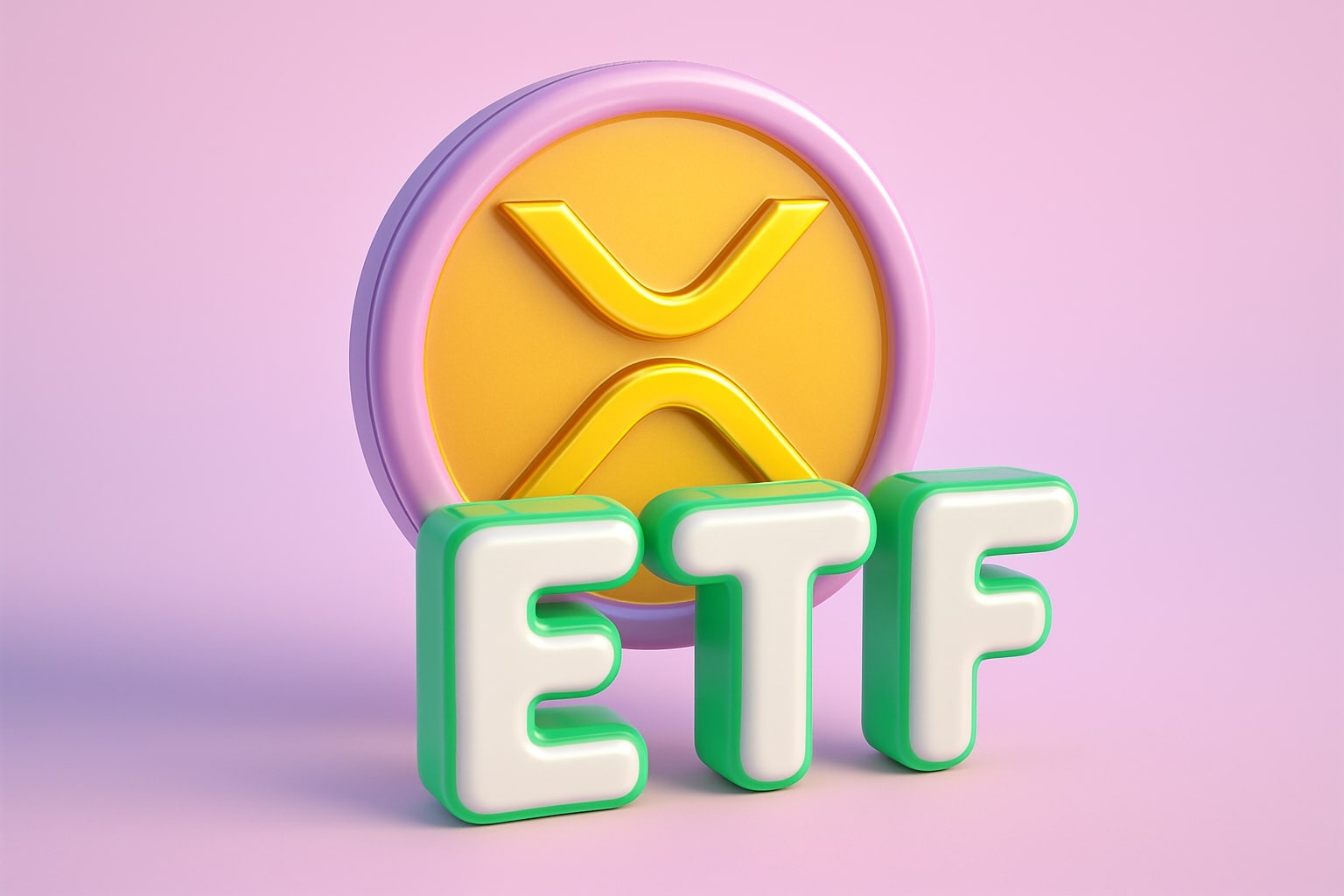
Ethereum Price Forecast - ETH-USD Battles to Hold $3,000 as ETF Outflows and Leverage Threaten Breakdown
Ethereum (ETH-USD) slips to $2,910 after $1B in ETF outflows and record derivatives leverage (0.56), testing the $3,000 support | That's TradingNEWS
Ethereum Price Forecast - (ETH-USD) Struggles To Defend $3,000 As Structural Selling Deepens
Ethereum (ETH-USD) trades near $2,910, marking a 6.9% daily decline and roughly 40% loss since its August peak of $4,900. The coin’s weakness reflects systemic pressure across derivatives, ETFs, staking, and treasury accumulation. The $3,000 level now serves as Ethereum’s critical structural pivot — the last line of defense before deeper losses emerge.
Derivatives Market Overheating As Leverage Soars To Record Levels
Ethereum’s derivatives exposure has reached unprecedented intensity. Data from Binance shows the estimated leverage ratio (ELR) surging to 0.5617, while ETH remains range-bound between $2,900–$3,160.
Futures open interest stands at $38.6 billion, showing that both bulls and bears are highly leveraged without directional conviction. Historically, similar setups preceded sharp liquidations — March 2024 saw a 25% intraday swing once forced liquidations cascaded. With excessive leverage now coiled, even a $100 move could ignite a chain reaction of margin calls and volatility spikes.
ETF Outflows Accelerate As Institutional Demand Weakens
Spot Ethereum ETFs collectively hold 6.36 million ETH, or roughly 5.2% of total supply. However, institutional flows have reversed sharply. November alone recorded more than $1 billion in net outflows, including a $180 million single-day withdrawal — the largest since launch.
ETF total assets fell from $24 billion to $18.7 billion, erasing nearly one-quarter of exposure in two months. This trend confirms waning confidence among institutional allocators, forcing Ethereum to rely on network-level demand such as staking, Layer-2 fees, and corporate treasuries — all insufficient to offset institutional exits.
BitMine (BMNR) Remains The Last Major Corporate Buyer
BitMine, Ethereum’s largest corporate holder, remains the only aggressive accumulator. The firm controls 3.56 million ETH, equivalent to about $10.6 billion in assets, or nearly 3% of total supply. Its cost basis near $4,009 leaves over $3 billion in unrealized losses.
Despite an 80% collapse in its stock price since July, BitMine continues buying, supported by $607 million in cash and $11.8 billion in total assets. ARK Invest and JPMorgan recently added to positions, interpreting BitMine’s valuation discount — market cap near $9.2 billion vs. ETH holdings worth $10.6 billion — as an opportunity.
The firm earns roughly 2.9% APR from staking and plans to expand restaking yields to 3.5%, ensuring continuous income even in bearish conditions.
Staking Ecosystem Contracts As Validator Activity Drops
Beaconchain data shows Ethereum validator participation declining 10% since July — the steepest drop since the network’s switch to Proof-of-Stake in 2022.
Average staking yield has fallen from 8.6% (May 2023) to 2.9%, eroding profitability for leveraged stakers. Validator exit queues surged through Q3 as operators took profits from prior bull cycles. The contraction in validator count undermines passive buying support, reducing Ethereum’s natural price stabilization mechanism.
Whales And Long-Term Holders Accelerate Liquidations
Glassnode reports that long-term holders — wallets inactive for 155+ days — are selling about 45,000 ETH daily, equating to $140 million in realized supply. Several dormant ICO-era wallets have reactivated, adding further pressure near $3,000.
The ongoing selloff resembles 2021-style capitulation, with legacy holders transferring coins to short-term speculators. It signals exhaustion among early investors but may also preface eventual redistribution before a longer-term bottom forms.
Macro Headwinds And Bitcoin Correlation Intensify
The Federal Reserve’s hawkish stance has stalled hopes for a rate cut. Treasury yields above 4.5% sustain tight liquidity, reinforcing risk aversion. Bitcoin (BTC-USD) dropped 4.2% to $89,046, while Ethereum (ETH-USD) underperformed, falling 6.9% to $2,910.
ETH’s market dominance slipped to 10.9%, its weakest level in over a year. In tightening liquidity cycles, Bitcoin captures capital preference, leaving Ethereum more volatile and vulnerable to downside extensions.
Technical Breakdown: $3,080 Support, $3,373 Resistance, $2,945 Pivot
Price structure shows consistent lower highs and lower lows since September. Resistance remains dense between $3,200–$3,250, reinforced by the SuperTrend ceiling, while the 23.6% Fibonacci retracement at $3,373 marks a key reversal trigger.
Immediate support stands at $3,060–$3,080. A break below exposes $2,945, the 0% Fibonacci level, defining the structural floor. Sustained trade under that range opens a path to $2,700, aligning with multi-month demand. Conversely, a recovery above $3,373 could extend to $3,637–$3,800, contingent on renewed ETF inflows and deleveraging.
Layer-2 Growth And Quantum-Resistant Evolution
Ethereum’s long-term development path continues despite market headwinds. Vitalik Buterin confirmed a four-year roadmap for quantum-resistant cryptography and protocol ossification — a strategy to secure core functions while shifting innovation to Layer-2 ecosystems like Arbitrum, Optimism, and Base.
This evolution ensures scalability but moves liquidity away from mainnet, reducing gas usage and fee-driven burn — softening ETH’s deflationary mechanics in the short term.
Valuation Gap Suggests Long-Term Undervaluation
From a network value perspective, ETH/BTC ratio = 0.032, far below the historical average of 0.06. A reversion to that mean implies potential ETH fair value near $12,000 relative to Bitcoin’s network valuation.
Fundstrat’s Tom Lee views this as structural mispricing, supported by strong fundamentals — staking income, decentralized finance dominance, and developer retention. Still, the sustainability of the current $3,000 base remains the near-term determinant for whether that valuation gap can narrow.
Read More
-
FUTY ETF Outperforms S&P 500 as Utilities Surge — Analysts See 25% Upside
19.11.2025 · TradingNEWS ArchiveStocks
-
XRP ETFs XRPI and XRPR Drop as XRP-USD Holds $2.00 — $128M ETF Inflows Signal 35% Upside Potential
19.11.2025 · TradingNEWS ArchiveCrypto
-
Natural Gas Price (NG=F) Rallies 5% to $4.55 as Winter Cold and LNG Flows Ignite Bullish Momentum
19.11.2025 · TradingNEWS ArchiveCommodities
-
USD/JPY Price Forecast - Yen Rallies to 156.54 as Rising JGB Yields
19.11.2025 · TradingNEWS ArchiveForex
Volatility Compression Signals Imminent Breakout
The 30-day realized volatility dropped below 35%, one of the lowest levels since mid-2023. Such compression phases typically precede explosive directional movement. Elevated open interest means that any breakout — bullish or bearish — could amplify rapidly.
A close above $3,300 could trigger short-covering rallies toward $3,600, while a fall below $2,945 may cascade to $2,700–$2,150. The direction of the next breakout will likely define Ethereum’s Q1 2026 narrative.
Final Market Assessment And Verdict
Ethereum’s resilience now hinges entirely on defending $3,000. Structural selling pressure, institutional retreat, and validator contraction weigh heavily, yet the network’s intrinsic fundamentals and treasury accumulation continue to underpin long-term value.
For traders and institutional desks, ETH remains a tactical hold within a bearish near-term framework. Accumulation below $2,900 offers asymmetric upside should ETF flows stabilize and macro liquidity ease.
Verdict: Hold Bias With Short-Term Bearish Tilt, Accumulation Zone $2,700–$2,900.
Ethereum’s structural foundations remain intact, but momentum requires confirmation above $3,373 to transition from defense to recovery

















